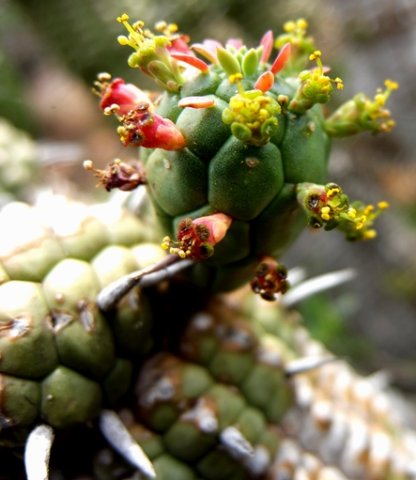Euphorbia mammillaris branching at a stem-tip

This young stem-tip branch of Euphorbia mammillaris has been very busy producing cyathia and some fleshy leaves at its top, red or green in colour.
Note the shape of the stem surface sections or tubercles and where the cyathia emerge from the seams between them. The short, thick spines are white, tapering to menacing hard tips (Vlok and Schutte-Vlok, 2010; Wikipedia).

